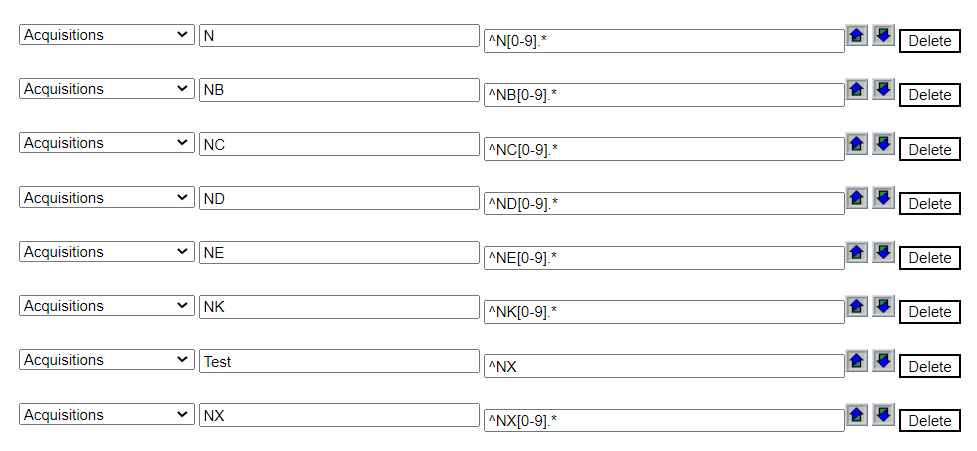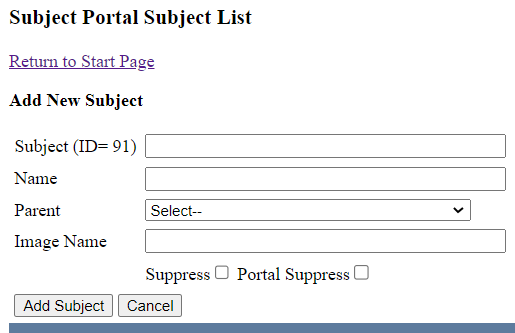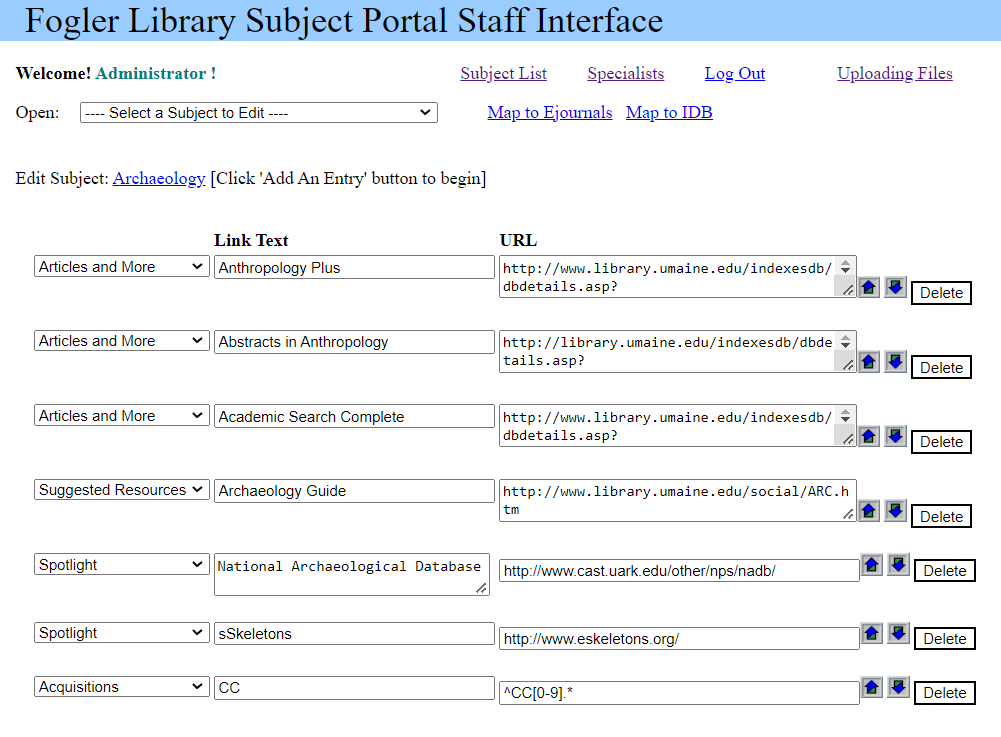Technical Services: Editing Subjects in Subject Portal (for New Acquisitions)
Purpose: To document the procedure/s required to edit the subject list located in the subject portal. These steps will scope recent acquisitions to the appropriate resource guides, by subject.
Overview: The subject portal was created in the early 2000s to host resource guides authored by subject specialists. Today, the portal serves as only a database to deliver information about recent acquisitions to resource guides now hosted on the LibGuide platform.
Subject List: New subject areas may be requested by Subject Specialists as academic programs expand and evolve on the University of Maine campus. The portal’s subject list is comprehensive but it is possible to edit an existing subject or create new subject areas as needed. While topic areas can also be deleted, there is no longer a need to do so. Unused subject areas may simply sit in the background of the portal, available for use again at a later date.
The image above shows the first few lines of the subject list. This page includes a number of data points that are no longer needed*. Simply ignore them.
From left to right, the columns include:
- the automatically-generated subject “ID” number,
- the subject area,
- the name label as it appeared in portal-driven guides,
- the page parent relationship,*
- images related to the subject,*
- the number of indexes and databases related to the subject area,*
- the visibility status within the portal,* and
- buttons to delete, edit, or change images*.
Add a New Subject
Login to the Subject Portal using your username and password.
To add a new subject, click the “Add Subject” button located just below the “Subject Portal Subject List” header. This action will launch the data input interface.
- In the text field beside the automatically-generated “subject ID” number, type in the new subject area.
- In the “Name” text field, add the related, campus-specific subject. For instance, the subject may be “Civil Engineering” universally but at UMaine, the subject may be called “Civil and Environmental Engineering.”
- Set the parent drop-down menu at “Self.”
- Leave the Image Name field blank.
- Leave “Suppress” and “Portal Suppress” unchecked.
- Click the “Add Subject” button to create the new subject.
- If you’ve changed your mind, click “Cancel.”
- If you have no new subjects to add, click the “Return to Start Page” text link.
Editing Subject LC Ranges
On the Subject Portal start page, you will find the “Select a Subject to Edit” drop-down menu. This list includes all subjects included in the subject list.
Below is an image showing the full list of features originally included on the Subject Portal reference guide for archaeology and anthropology. These features included articles and more*, suggested resources*, spotlight resources*, and the only field still in active use: Acquisitions.
When new subject areas are created, the subject specialist will be asked to submit the expression code to define LC Ranges in order to capture the full scope of recent acquisitions related to these fields of study. Each LC Range requires a separate line (See example below). For assistance creating these expression codes, please contact the head of Acquisitions.
- On the start page, use the drop-down menu to select the desired subject area.
- Click the “Add An Entry” button on the bottom of the page to create a new line for data.
- Select Acquisitions from the drop-down menu.
- Enter the text link (the letter designation of the LC Range).
- Enter the expression codes for the LC subject ranges, provided by the resource librarian.
- Click the “Save The Change” button.
- Repeat Steps 2-6 until all LC Range expression codes have been entered.
- If you are done, click the “Log Out” text link at the top of the window.

Testing Acquisitions Lists
To confirm that the correct LC Subject Ranges are being delivered under new acquisitions, you need to view the existing list of acquisitions for the subject area. This can be accomplished by using the base URL, “https://library.umaine.edu/subjectPortal/acquisitions.aspx?subject=” followed by the subject located under the subject heading in the Subject List (see above).
When testing a subject area that includes a space in the name, such as Civil Engineering, you need to add a percentage sign and the number 20 (%20) between each word of the subject to indicate the space (see examples, below).
Examples
https://library.umaine.edu/subjectPortal/acquisitions.aspx?subject=Art
https://library.umaine.edu/subjectPortal/acquisitions.aspx?subject=Archaeology
https://library.umaine.edu/subjectPortal/acquisitions.aspx?subject=Civil%20Engineering
The “Map to Ejournals” and “Map to IDB” text links are a legacy feature that no longer serves a function. Ignore them.
Log Out
When you are done working in the Subject Portal Staff Interface, it is important to click the “Log Out” link, as it will properly close out your work session. Just closing or quitting out of your browser can lead to unresolved work sessions. If you encounter issues, clear your browser history, cache, and cookies. Close out your browser, then open a new browser window and navigate to the login page.
Technical Support
The subject portal was originally created by independent contractor, Curtis Meadows. If and when you encounter malfunctions, please follow department protocols for contacting Meadows to provide technical support.
Return to Technical Services Table of Contents.



